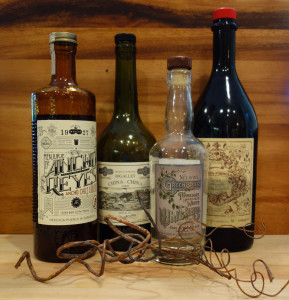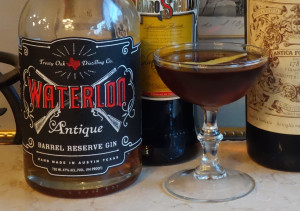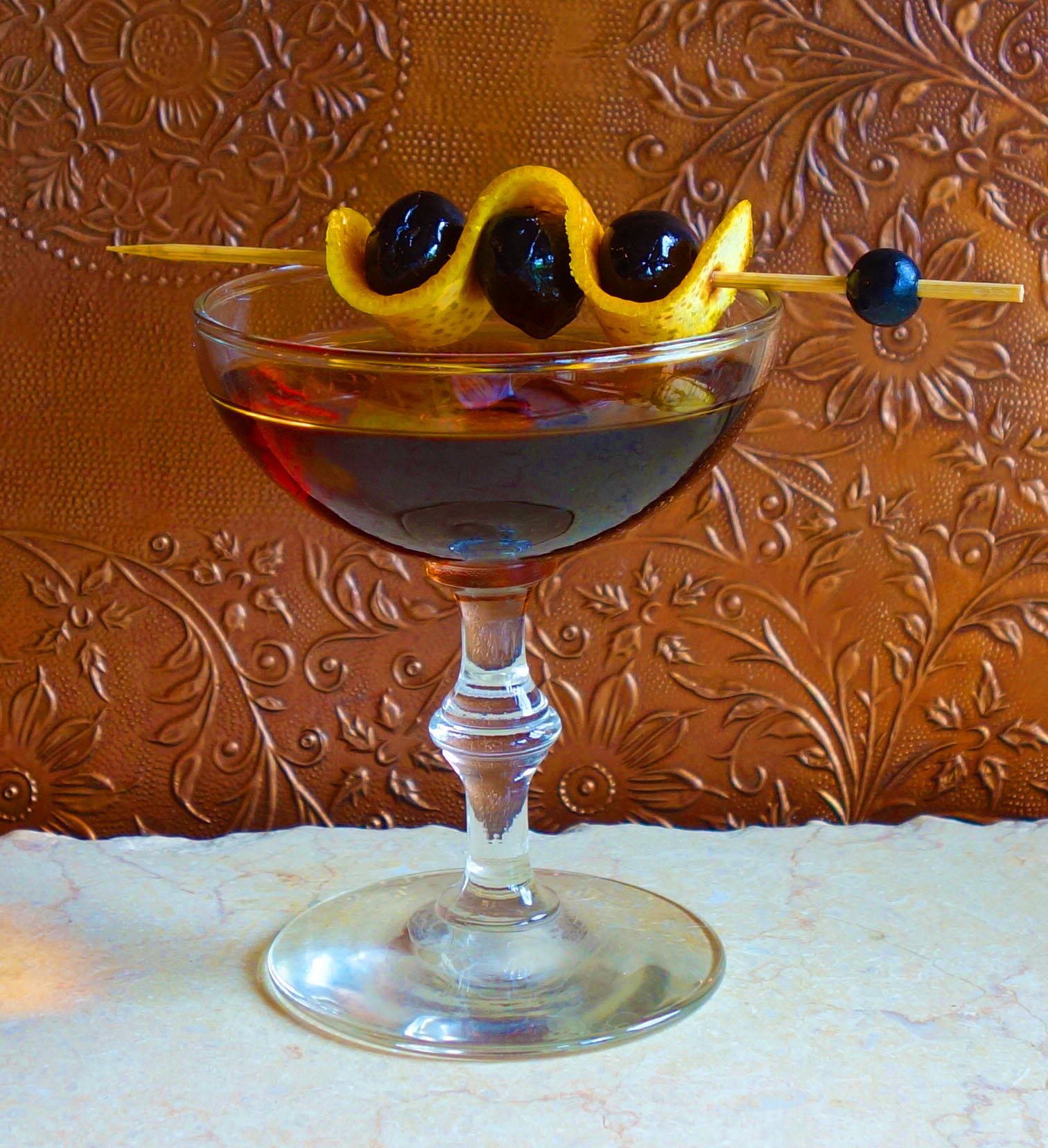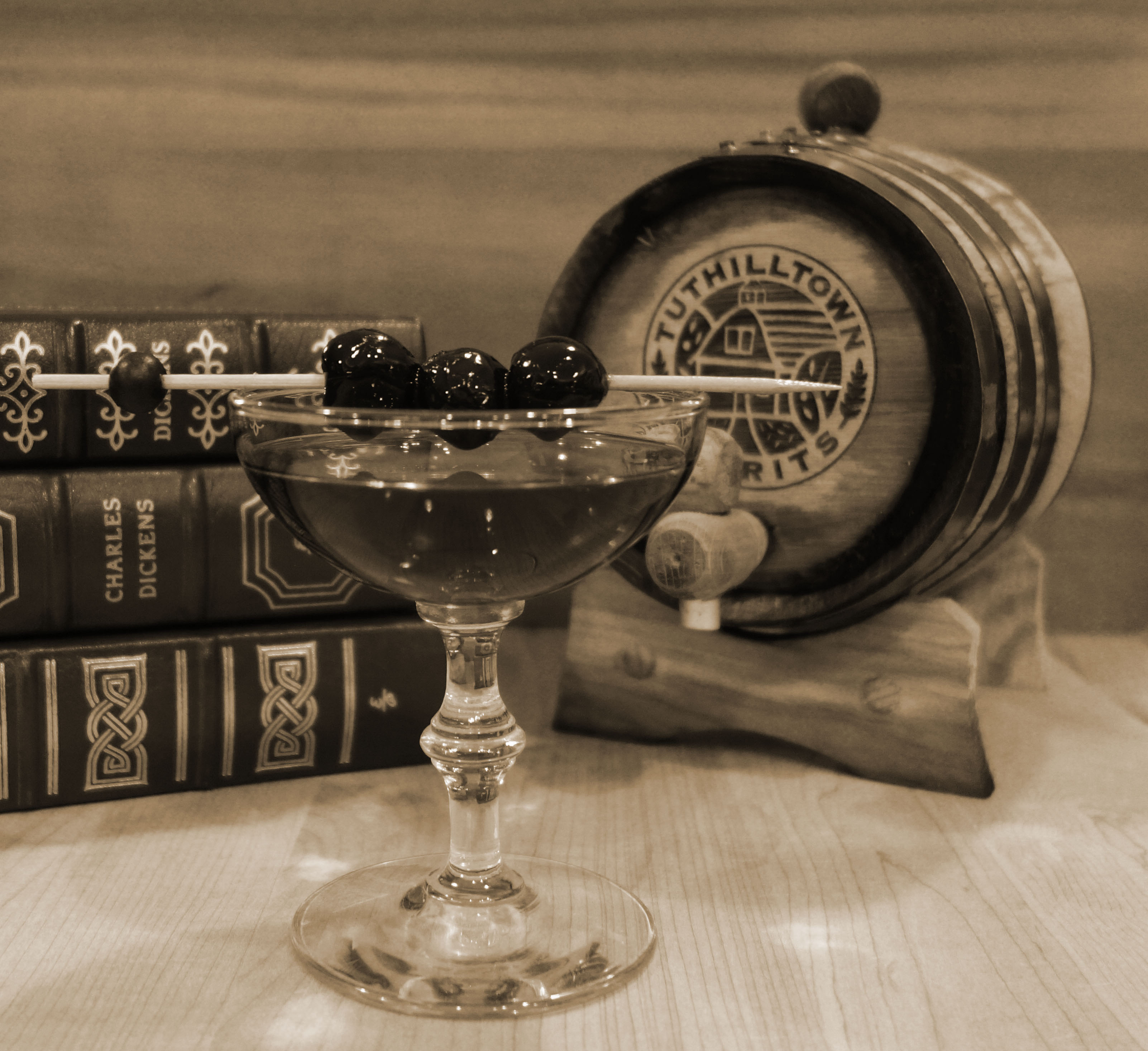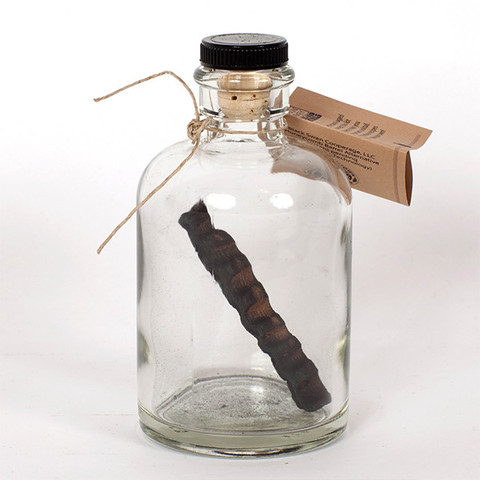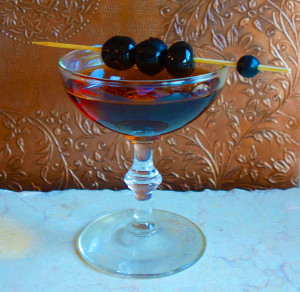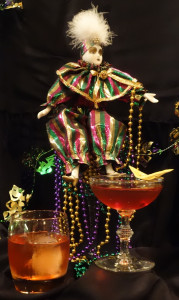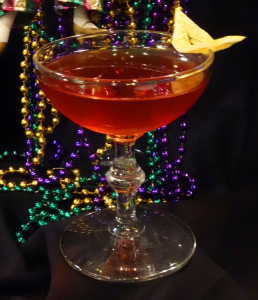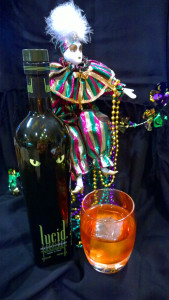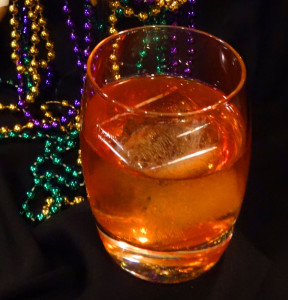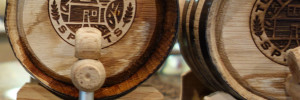 Page updated February 26, 2023
Page updated February 26, 2023
Read on to learn the basics of barrel aging and how to get started. To see some additional barrel aged cocktails and spirits go here.
Once the concept was introduced by Jeffrey Morgenthaler around 2010, barrel aged cocktails became the next great drink and are now easily found at upscale bars across the country. When a cocktail is barrel aged it takes on flavors from the wood and if it contains a fortified wine, from some oxidation as well. The result can be amazing. The idea seems easy enough: make up a cocktail, pour it into a barrel and wait a few weeks. Of course, there is a little more to consider, especially if you are wanting to do this at home. I do recommend trying this at home. So, let’s look at how best to do this, and at some choices you will need to make.
We are going to discuss:
- What does the barrel do to the cocktail
- Obtaining and using a barrel at home
- Which types of cocktails lend themselves to barrel aging
- Generational Aging
- Step by step examples
- A possible alternative for similar results
What is happening to my drink?!
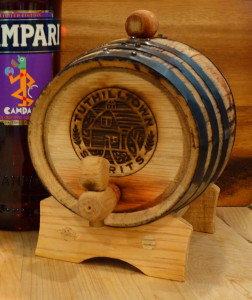 When you barrel age a cocktail you are doing two things:
When you barrel age a cocktail you are doing two things:
- Allowing the liquid to oxidize
- Infusing the drink with wood – and with whatever was previously in the barrel.
We generally consider oxidation to be a bad thing. Think of red wine that has been sitting on the counter a week after it was opened. Actually, oxidation is essential for the development of wine – especially fortified wines such as Sherry and Madeira. It is oxidation occurring after fermentation that is generally considered a bad thing. In this case, oxidation will develop flavors of apple, cider, nuts (especially almonds), candied fruit and yeast. There is also a bitter component. The flavor can be described as “flat,” with a loss of fruitiness. In a barrel aged cocktail, this presents itself as a mellowing of flavors. The extent to which each of the above mentioned flavors occur will depend on the contents of your cocktail. The process of oxidation is most pronounced with drinks containing fortified wines.
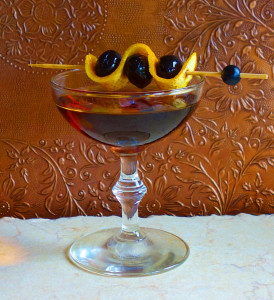 As noted, barrel aging is simply infusing with charred wood. If you age a cocktail in a new barrel, the flavors added to the liquid are frequently described as a combination of bitterness, vanilla, nut, caramel, walnut, coconut, and clove. If your barrel is used, it will impart additional flavors from whatever was in it previously. Examples are cherry from sherry and sweet spice from bourbon. All of this becomes more interesting when the barrel’s previous occupant was a different cocktail. I will discuss this more later, but for now let’s move on.
As noted, barrel aging is simply infusing with charred wood. If you age a cocktail in a new barrel, the flavors added to the liquid are frequently described as a combination of bitterness, vanilla, nut, caramel, walnut, coconut, and clove. If your barrel is used, it will impart additional flavors from whatever was in it previously. Examples are cherry from sherry and sweet spice from bourbon. All of this becomes more interesting when the barrel’s previous occupant was a different cocktail. I will discuss this more later, but for now let’s move on.
What kind of barrel should I get and from where?
Like any infusion, the greater the surface area of the solids to volume of liquid – the faster the process. This means that smaller barrels will infuse (barrel age) the cocktail more quickly than larger ones.
 The other consideration in deciding the barrel size is: How much do you want to make of a single cocktail? A liter barrel will make 8-12 drinks. Larger barrels will yield more drinks, but you can make multiple small batches with smaller barrels. Plus, as we will discuss, you have to keep the barrel going. You can’t let it sit empty – you have to keep using it. So, keep in mind how many barrel aged cocktails you will serve. Also, Larger barrels cost more to purchase and to fill.
The other consideration in deciding the barrel size is: How much do you want to make of a single cocktail? A liter barrel will make 8-12 drinks. Larger barrels will yield more drinks, but you can make multiple small batches with smaller barrels. Plus, as we will discuss, you have to keep the barrel going. You can’t let it sit empty – you have to keep using it. So, keep in mind how many barrel aged cocktails you will serve. Also, Larger barrels cost more to purchase and to fill.
We chose to go with two, one liter barrels. Two barrels allows some flexibility. The one liter size will produce the number of barrel aged drinks that we are likely to serve.
Barrels are available at some high end liquor stores and online. Try Oak Barrels Ltd. We have ordered from a few different companies and have found Oak Barrels Ltd. to be very good. Just be sure that the barrel is charred and made for actual use and not for decoration – no varnish and actually functional bungs and taps. All companies will personalize.
Which Cocktails to Try?
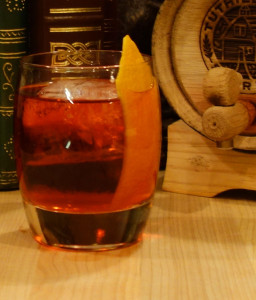 As noted, cocktails containing some fortified wine lend themselves best to the aging process. This is most probably due to the oxidation of the fortified wine adding to the complexity of the finished cocktail. It doesn’t make a lot of sense to me to barrel age a drink made solely from already aged ingredients: such as barrel aging an Old Fashioned. We thus far, have aged a Martini and various Manhattans and Negronis.
As noted, cocktails containing some fortified wine lend themselves best to the aging process. This is most probably due to the oxidation of the fortified wine adding to the complexity of the finished cocktail. It doesn’t make a lot of sense to me to barrel age a drink made solely from already aged ingredients: such as barrel aging an Old Fashioned. We thus far, have aged a Martini and various Manhattans and Negronis.
An interesting side product has been the Sherry and whiskey that we used to flavor the barrels. The Sherry took on a pleasant flavor of oak with dried cherries and figs. The whiskey initially began to taste like a young bourbon with vanilla, cinnamon and clove. After the barrel was used for a Negroni, the whiskey went back in for a few weeks. This time there was an added dried fruit and richness along with the smoky, charred oak. After the Martini was aged, the whiskey picked up herbal notes from the dry vermouth and gin. What we try with the Sherry and whiskey will be a tale for another day!
Generational Aging
If all you want to achieve is adding the flavor of charred wood to your cocktail. Okay, but I think you’ll miss a lot. Generational Aging is the concept of putting a spirit into a barrel that has had a previous occupant. It is not a new concept in aging spirits:
- Bourbon in new barrels
- Scotch in Bourbon barrels
- Rum in about anything
Any liquid that goes into a barrel:
- Is influenced by everything that came before
- Effects everything that comes after
When you season a new barrel with a spirit, that spirit takes on flavors from the new charred barrel such as bitterness, vanilla, nut, caramel, walnut, coconut, clove and others. Meanwhile, the barrel absorbs flavors from the original spirit.

Now, when you replace the original spirit with a cocktail, or another spirit, that liquid also takes on flavors from the barrel as well as flavors from the original spirit that were absorbed into the wood. Meanwhile, the barrel absorbs flavors from the new cocktail or spirit.
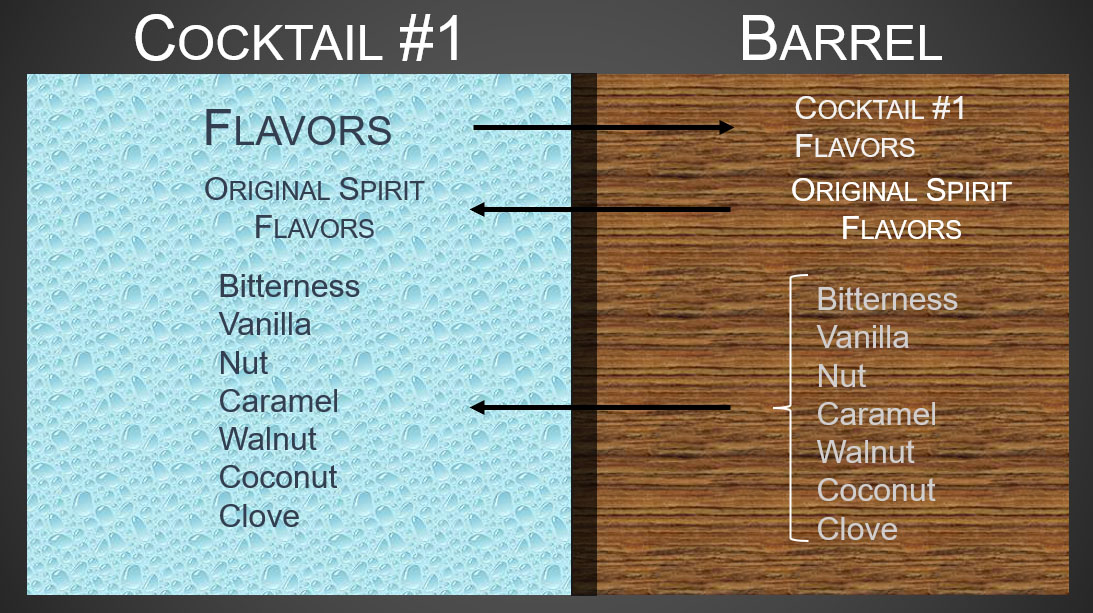
With each cocktail or spirit you put into and remove from the barrel, the original flavors from the charred wood will fade. By refilling the barrel with the original spirit between cocktails, the barrel is recharged with those initial flavors from the barrel. That original spirit will also absorb flavors left behind by the cocktail.
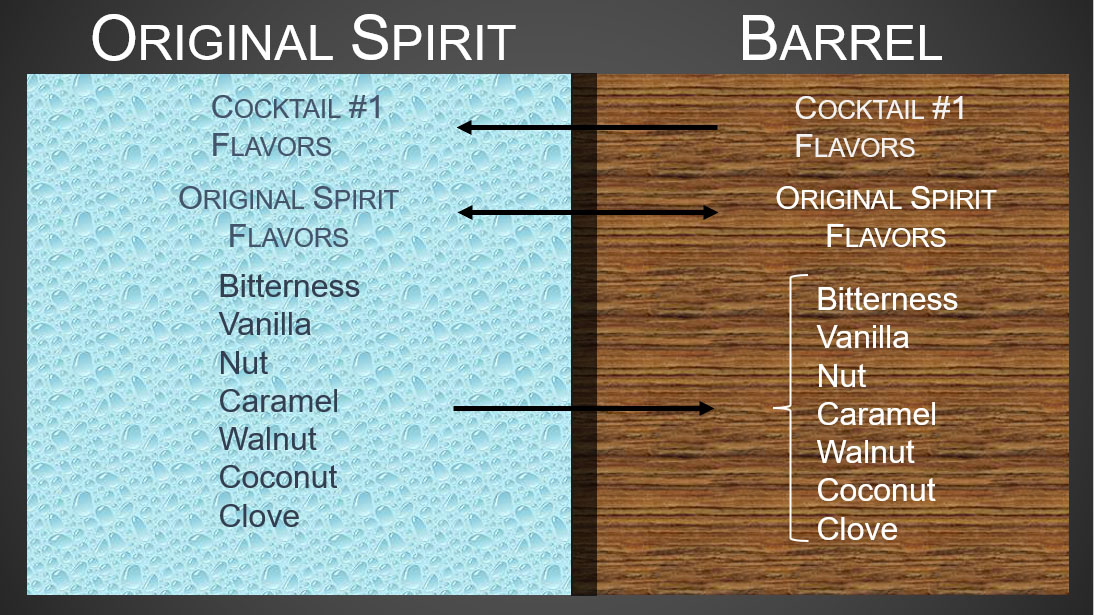
Now, when you put a different cocktail into the barrel, things will begin to get very interesting. As already noted, everything put into the barrel is influenced by everything that came before and it effects everything that follows.
This method of Generational Aging creates amazing barrel aged cocktails, spirits and fortified wines and prolongs the life of your barrel. Eventually, the barrel will be used up like a tea bag. Some of ours lasted only a dozen or so rotations while others have lasted 5 or more years.
The Step by Step How to
Initial Rinse and Soak
The first thing you will need to do, after obtaining your barrel, is to wash it thoroughly with water. Simply fill, shake, drain, repeat – until black bits stop coming out. When the rinse water is clear, fill the barrel completely with filtered water and then measure the volume the barrel holds. This will assist you in calculating the amount of cocktail to fill your barrel. If you fill your barrel with liquid at this point, it will leak. You need to fill it with filtered water, close it up and let it sit overnight. This will cause the wood to swell and seal the majority of the leaks. I say “majority” because the barrel will still drip some. For this reason I suggest you set the barrel on something like a plastic container lid. Once you’ve rinsed and soaked it, your barrel is ready for use.
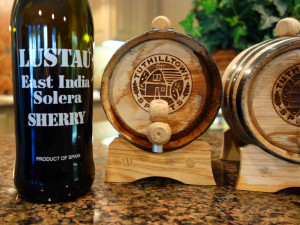 Seasoning the Barrel
Seasoning the Barrel
While a cocktail could, at this point, be put into your barrel, I strongly suggest that you flavor the barrel first. Starting with a fortified wine or whiskey will add flavors that you can’t get from new charred oak. The goal is to add something that the cocktail doesn’t already contain. We used Sherry for the barrel to age Manhattans. Other options would be Madeira or Port. Our other barrel was started with un-aged corn whiskey. This barrel was destined for Negronis and other cocktails. After 4 weeks, rotating the barrels 1/4 turn each week, we drained the barrels and rinsed them. The 4 weeks was arbitrary. It could have been longer, but probably not shorter. The aged Sherry and Whiskey were returned to their original bottles. They were then reused in the barrels between cocktails.
Calculating the Ingredients
Now it is time for your cocktail. Whatever you’re going to age, use your best, most favorite recipe.
Calculating the quantities of each ingredient is simple: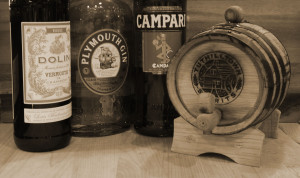
- Convert your measures: If your barrel is in gallons and you are using metric, convert the gallons to liters. If your barrel is in metric and you are using ounces, convert the barrel to ounces. We used the later. A liter barrel is a little more than 35 ounces.
- Total the number of ounces (mils) in one drink, (figure 1/8 tsp for a dash). Then divide that number into the volume of your barrel. This will give you the number of drinks the barrel will hold.
- To calculate the volume of each ingredient, multiply the amount for one drink by the number of drinks the barrel will hold.
You will want to round up to fill the barrel completely. Partial filling can lead to an area of dry barrel which will leak and possibly to excessive oxidation.
The Aging Process
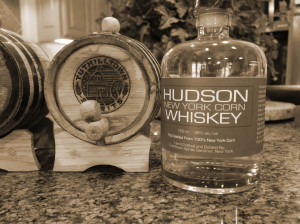 When you’re ready to load your cocktail, combine all ingredients in a single container, preferably with a pour spout. You may or may not want to include bitters. You can always add them to individual servings.
When you’re ready to load your cocktail, combine all ingredients in a single container, preferably with a pour spout. You may or may not want to include bitters. You can always add them to individual servings.
Push the spigot tightly into the barrel. You may want to test this the first time by adding water thru the bung whole to check the seal. If you do, be sure to completely drain the barrel.
Using a funnel, carefully pour the cocktail into the barrel. Once the cocktail is in the barrel, push the bung tightly into the bung hole.
Important note: When you push the bung into the bung hole, you will create a small amount of pressure in the barrel. This will lead to an initial increase in leakage. To prevent this, once the bung is in place, turn the barrel on end, spout end up and open the spout. You will get a tiny spurt of liquid. Close the spout and set the barrel on it’s side in the cradle.
Taste your cocktail frequently. This should even be daily for lighter drinks. Heavier drinks, such as Manhattans and Negronis, can wait a week, but taste frequently. Cocktails age from ‘not-quite-there-yet’ to ‘over-the-hill’ very quickly.
While aging, turn the barrel 1/4 turn each week. This keeps all of the barrel wet and exposes the liquid to all of the wood surface.
Bottling and Storing Aged cocktails
Before I get to actual recipes: how you store your aged cocktail is important. First, use a glass bottle with a tight seal. A bottle with a cage top will work very well. Secondly, triple filter your cocktail before bottling. A small mesh strainer, followed by a metal coffee filter and finally a paper coffee filter. Thirdly, refrigerate the cocktail. This will slow further oxidation. Your aged cocktail will change over time. To me, if the cocktail was not triple filtered, the flavors become flat, more bitter and less complex. Filtered, your cocktail will be good for several weeks.
To serve, measure out the volume that would have been in the original, single drink. Add this to a mixing glass with ice and stir to chill. The chilled cocktail will be stronger than one you started with at room temperature. This is because chilled ingredients will not create as much dilution from melting. So I suggest you dilute the drink by 10% with cold water.
Maintaining the Barrel
When not in use, the barrel must be kept wet. If you fill it with water, it will rot. If you fill it with watered down Everclear, you will soak out flavors. We use Generational Aging as described above. Thus, we refill with the original spirit. We also will top off the barrel with the original spirit every 3-4 weeks.
Examples
Barrel Aged Negroni
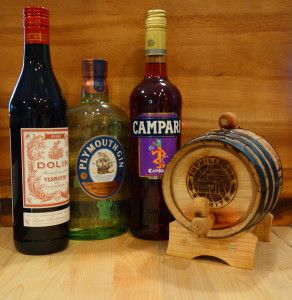 Use a whiskey barrel. Plan on 3-4 weeks of aging. I left the bitters out of the aging process and added them to the individual cocktails.
Use a whiskey barrel. Plan on 3-4 weeks of aging. I left the bitters out of the aging process and added them to the individual cocktails.
Original Negroni
- 1 oz. Plymouth Gin
- 1 oz. Campari
- 1 oz. Dolan Sweet Vermouth
- 1 dash Regan’s Orange Bitters
- 1 dash Angostura Orange Bitters
- 1 fat orange peel for garnish
For a 1 liter whiskey barrel:
- 12 oz. Plymouth Gin
- 12 oz. Campari
- 12 oz. Dolans Sweet Vermouth
Age for 3-4 weeks. This varies with each batch. So, just because the first batch took 4 weeks, the next may be 3 weeks and a couple of days. TASTE OFTEN!!
 To serve:
To serve:
- Pour 3 oz. Aged Negroni into a mixing glass with ice. Add bitters. Stir to chill.
- Taste for strength and add water if needed.
- Strain into a chilled Old Fashioned with a large ice cube.
- Flame the orange peel over the drink and float the peel.
Barrel Aged Manhattan.
 I think that this is by far the best cocktail to age. Use a barrel that has been seasoned with a fortified wine. We used Sherry. Plan on 4 weeks of aging.
I think that this is by far the best cocktail to age. Use a barrel that has been seasoned with a fortified wine. We used Sherry. Plan on 4 weeks of aging.
Original Manhattan
- 2 oz. Russell’s Reserve 10 Year Old Bourbon
- 1 1/2 oz. Italian Vermouth (sweet)
- 1 tsp Grand Marnier
- 1 – 2 dashes Angostura Orange Bitters
- maraschino cherries for garnish
For a 1 liter Sherry barrel:
One liter is equal to about 35 ounces. The Manhattan recipe above makes a drink that is just shy of 3 3/4 ounces. So 35 divided by 3 3/4 is 9 1/3, or 10 drinks. Multiplying the quantity of each ingredient by 10 gives us:
- 20 oz. Russell’s Reserve 10 Year Old Bourbon
- 15 oz. Italian Vermouth (sweet)
- 1 2/3 oz. Grand Marnier
- 10 dashes (or 1 1/4 tsp) Angostura Orange Bitters
Age for 3-4 weeks. This varies with each batch. So, just because the first batch took 4 weeks, the next may be 3 weeks and a couple of days. TASTE OFTEN!!
 To serve:
To serve:
- Pour 3 1/2 oz. Aged Manhattan into a mixing glass with ice. Stir to chill.
- Taste for strength and add water if needed.
- Strain into a chilled cocktail glass.
- Garnish with maraschino cherries and perhaps an orange twist
Gin and Fortified Wine Fail
I include this as an example of what not to do! I like this cocktail, though I’ve never given it a name. Barrel aging it in a Whiskey/Negroni barrel sounded like a good idea. However, I got distracted and failed to taste it for a week. By the end of 1 week, it was ruined. This cocktail is bright, floral and herbal. After 1 week in the barrel it was left flat, with faint oak, a touch of juniper from the gin and that’s about it! If I had tried this with the ‘Alternative’ below, I could have saved a lot of alcohol!
Original Single Cocktail
- 1 1/2 oz. Ford’s Gin
- 3/4 oz. Dolan Dry Vermouth
- 1/4 oz. Liquore Strega
- Lemon peel for garnish
For a 1 liter whiskey/Negroni barrel:
- 19 1/2 oz. Fords Gin
- 9 3/4 oz. Dolan Dry Vermouth
- 3 1/4 oz. Liquore Strega
Aging brought nothing to the party. I do not even plan to try this with bottle aging. Bottom line: Don’t waste the booze!
An Alternative
 So, can barrel aging be done without a $50 – $75 barrel, 1+ liters of expensive booze and 3 – 4 weeks? The short answer is “Yes.” The long answer is “Yes, but it won’t be quite the same.” Tuthilltown did offer a Cocktail Aging Kit consisting of a 12 oz. bottle with a charred “barrel stave.” With this, you could age a cocktail in 2 weeks or less. I don’t think they still offer this product, but you can purchase staves here. These will fit in any 750 ml bottle or use a 375 ml bottle. The results will not be identical to barrel aging. You will have less complexity probably due to less oxidation in the sealed bottle. This can be a good thing….or not.
So, can barrel aging be done without a $50 – $75 barrel, 1+ liters of expensive booze and 3 – 4 weeks? The short answer is “Yes.” The long answer is “Yes, but it won’t be quite the same.” Tuthilltown did offer a Cocktail Aging Kit consisting of a 12 oz. bottle with a charred “barrel stave.” With this, you could age a cocktail in 2 weeks or less. I don’t think they still offer this product, but you can purchase staves here. These will fit in any 750 ml bottle or use a 375 ml bottle. The results will not be identical to barrel aging. You will have less complexity probably due to less oxidation in the sealed bottle. This can be a good thing….or not.
Pros
- Inexpensive – $6.32 plus S&H for 1 stave
- Smaller volume of ingredients
- Can try aging a cocktail before committing to a larger volume in a barrel
- Shorter time to completion
- Less oxidation
- No maintenance
Cons
- Smaller volume of ingredients
- Less oxidation
I have tried to flavor a stave with whiskey and then use it to age a cocktail in the bottle. This did not work. The staves don’t have a lot of life so you have to toss them after 1 or 2 drinks.
Overall, the Pros outnumber the Cons. I still suggest that you try the real deal and get a barrel or two. The bottle would be a good way to test age a cocktail before committing to a large volume and a lot of time.
Bottle Aged Negroni
The only equipment you need for this is the Cocktail Aging Kit
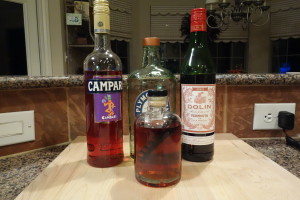 Original Negroni
Original Negroni
- 1 oz. Plymouth Gin
- 1 oz. Campari
- 1 oz. Dolan Sweet Vermouth
- 1 dash Regan’s Orange Bitters
- 1 dash Angostura Orange Bitters
- 1 fat orange peel for garnish
For 1 Bottle
- 3 oz. Plymouth Gin
- 3 oz. Campari
- 3 oz. Dolan Sweet Vermouth
- 3 dashes Regan’s Orange Bitters
- 3 dashes Angostura Orange Bitters
To Serve
- Pour 3 oz. Aged Negroni into a mixing glass with ice. Add bitters. Stir to chill.
- Strain into a chilled Old Fashioned with a large ice cube.
- Flame the orange peel over the drink and float the peel.
Bottom Line
Barrel aging is definitely worth doing at home. I also recommend the use of Tuthilltown’s Cocktail Aging Kit or staves, if for nothing more than age testing your cocktail recipe before going to the time and expense of barrel aging.
In addition to Manhattans and Negroni variations, (such as the Boulevardier,) you should consider aging tequila based drinks, cocktails combining fortified wines, and Maritinis. Just Google “barrel aged cocktail recipe” for some great ideas.
Cheers!
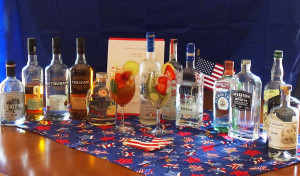 As busy host/hostess, anytime you can offer a fun, engaging, self-serve cocktail bar, expect your guests to rave about your entertaining prowess! A tonic bar is a simple way to allow your guests open access to create their own drinks while you get to enjoy your party too. Its versatility works great for casual outdoor gatherings and equally well for holiday festivities.
As busy host/hostess, anytime you can offer a fun, engaging, self-serve cocktail bar, expect your guests to rave about your entertaining prowess! A tonic bar is a simple way to allow your guests open access to create their own drinks while you get to enjoy your party too. Its versatility works great for casual outdoor gatherings and equally well for holiday festivities. Before we address the blue print for a great libation station, let’s look at the recent transformation of the venerable Gin and Tonic. About ten years ago, the “Gin Tonic” became the rage in Spain. Bars developed their own, proprietary Tonic Waters with which they prepared beautiful cocktails in over-sized, stemmed wine glasses, filled with colorful fresh citrus and herbs. Drinking establishments take pride in featuring their version of the “Gin Tonic.”
Before we address the blue print for a great libation station, let’s look at the recent transformation of the venerable Gin and Tonic. About ten years ago, the “Gin Tonic” became the rage in Spain. Bars developed their own, proprietary Tonic Waters with which they prepared beautiful cocktails in over-sized, stemmed wine glasses, filled with colorful fresh citrus and herbs. Drinking establishments take pride in featuring their version of the “Gin Tonic.”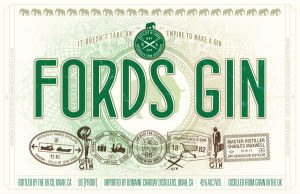 I had an opportunity to discuss Gin and Tonics with Jason Kosmas, Co-founder of The 86 Company, (Fords Gin among others), Co-founder of Employees Only and Co-author of Speak Easy. According to Jason, just about any premium brand of gin can be used for Gin and Tonics. Jason prefers that juniper be an actual flavor present in gin, followed by citrus and various herbs. When determining what will go best with any particular gin, Jason encourages us to “read the back label” and see what is in the gin. With Fords Gin, he suggests creating a cocktail with the addition of grapefruit, coriander, lemon, and jasmine.
I had an opportunity to discuss Gin and Tonics with Jason Kosmas, Co-founder of The 86 Company, (Fords Gin among others), Co-founder of Employees Only and Co-author of Speak Easy. According to Jason, just about any premium brand of gin can be used for Gin and Tonics. Jason prefers that juniper be an actual flavor present in gin, followed by citrus and various herbs. When determining what will go best with any particular gin, Jason encourages us to “read the back label” and see what is in the gin. With Fords Gin, he suggests creating a cocktail with the addition of grapefruit, coriander, lemon, and jasmine.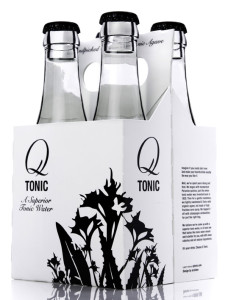
![]() When it comes to tonic water, there are several good premium brands readily available. Jason mentioned Fever Tree, East Imperial and Q Tonic. He looks for natural ingredients and sugars. The flavor should be quinine first and dry rather than sweet.
When it comes to tonic water, there are several good premium brands readily available. Jason mentioned Fever Tree, East Imperial and Q Tonic. He looks for natural ingredients and sugars. The flavor should be quinine first and dry rather than sweet.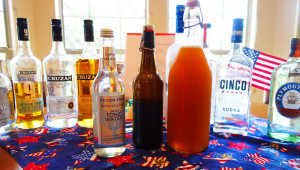
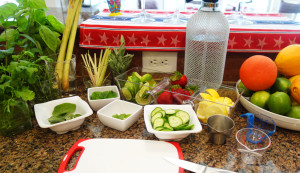

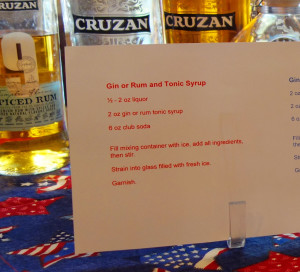


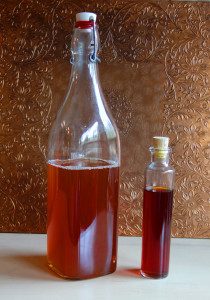 I had an opportunity to discuss Gin and Tonics with Jason Kosmas, Co-founder of The 86 Company, (Ford’s Gin among others), Co-founder of Employees Only and Co-author of
I had an opportunity to discuss Gin and Tonics with Jason Kosmas, Co-founder of The 86 Company, (Ford’s Gin among others), Co-founder of Employees Only and Co-author of 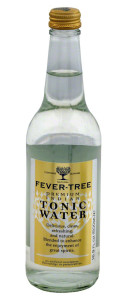
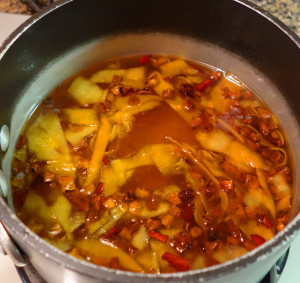
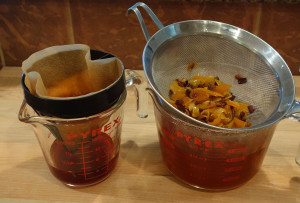
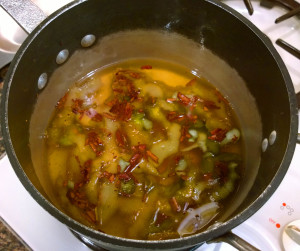
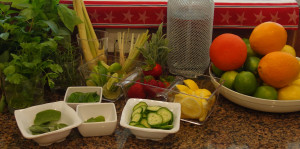
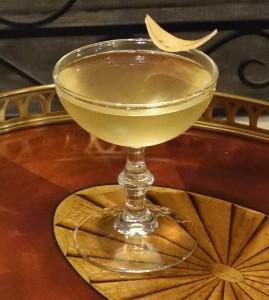
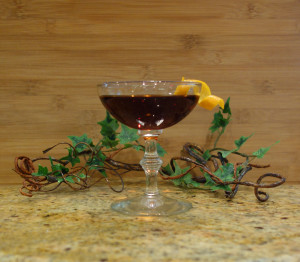 I met the Nelson brothers, of Nelson’s Green Brier Distillery, at this year’s San Antonio Cocktail Conference and visited with them again at TOTC. Their Belle Meade Bourbon is one of my favorites and with it I have created a number of cocktails. I first tasted their Nelson’s Green Brier Tennessee White Whiskey* at the San Antonio Cocktail Conference. It is single distilled from a mash of corn, barley and wheat which gives it some subtle, but distinct differences from other premium white whiskeys. First, I think Nelson’s Green Brier is slightly sweeter and has a malty/chocolate note. Still present is the ‘bite’ you would expect from white whiskey. Previously, I was not a fan of white whiskey, but liking theirs, I have set out to design some cocktails using Nelson’s Green Brier Tennessee White Whiskey.
I met the Nelson brothers, of Nelson’s Green Brier Distillery, at this year’s San Antonio Cocktail Conference and visited with them again at TOTC. Their Belle Meade Bourbon is one of my favorites and with it I have created a number of cocktails. I first tasted their Nelson’s Green Brier Tennessee White Whiskey* at the San Antonio Cocktail Conference. It is single distilled from a mash of corn, barley and wheat which gives it some subtle, but distinct differences from other premium white whiskeys. First, I think Nelson’s Green Brier is slightly sweeter and has a malty/chocolate note. Still present is the ‘bite’ you would expect from white whiskey. Previously, I was not a fan of white whiskey, but liking theirs, I have set out to design some cocktails using Nelson’s Green Brier Tennessee White Whiskey.